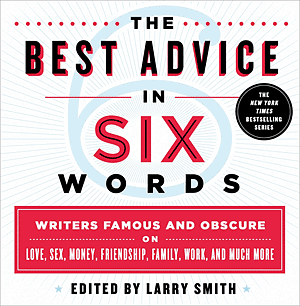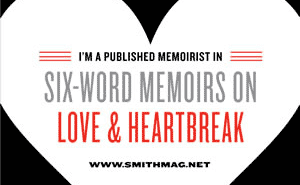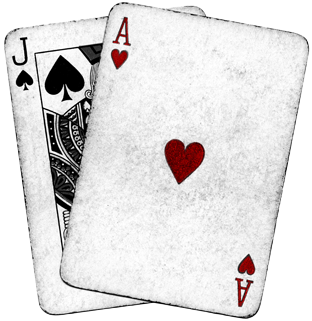Hell yes. Tool’s Lateralus analyzed and put into the context of the Fibonacci sequence. Or vice-versa. It’s always nice to receive confirmation that you’re not the only one who’s completely insane.
The Fibonacci in Lateralus
Next post: The sweet smell of paper
Previous post: Why Do We Twitter?










When the 13 tracks of Lateralus are rearranged with the Fibonacci in mind, the album is smoother, with a seamless transition between each song.
6, 7, 5, 8, 4, 9, 13, 1, 12, 2, 11, 3, 10
6. Parabol
7. Parabola
5. Schism
8. Ticks and Leeches
4. Mantra
9. Lateralus
13. Faaip de Oiad
1. The Grudge
12. Triad
2. Eon Blue Apocalypse
11. Reflection
3. The Patient
10. Disposition
6, 7, 5, 8, 4, 9, 13, 1, 12, 2, 11, 3, 10
See anything else? Look closely.
6 + 7 = 13
5 + 8 = 13
4 + 9 = 13
13
1 + 12 = 13
2 + 11 = 13
3 + 10 = 13
I just found this on the Internet. Author currently unknown.
I just counted out the opening groove to Lateralus. It was pointed out in the demo, but I needed to analyze it for myself. It’s correct.
The opening groove can be dictated as three bars, consisting of a bar of 9/8, followed by a bar of 8/8, followed by a bar of 7/8.
9, 8, 7.
987.
The Fibonacci Sequence:
0, 1, 1, 2, 3, 5, 8, 13, 21, 34, 55, 89, 144, 233, 377, 610, 987, 1597, 2584, 4181, 6765, 10946, 17711, 28657, 46368, 75025, 121393, …
Ha. I just noticed the 34 bar intro in the beginning, before the opening groove. 34 is the tenth number in the Fib. Sick.
Had a convo with a buddy the other night and started thinking about this again. I woke up today noticing something about the Lateralus Fibonacci sequence.
Again, it’s:
6, 7, 5, 8, 4, 9, 13, 1, 12, 2, 11, 3, 10
Now, an interesting pattern can bee seen if we examine the differences between the adjacent numbers:
6, 7 = 1
7, 5 = 2
5, 8 = 3
8, 4 = 4
4, 9 = 5
Then we have:
9, 13 = 4. Swinging us back for a moment as we hit the epicenter of the spiral.
It’s implied that we’re missing 6, the first perfect number. Anyhow, starting again with 13 in the sequence and spiraling out:
13, 1 = 12
1, 12 = 11
12, 2 = 10
2, 11 = 9
11, 3 = 8
3, 10 = 7
There’s probably more going on in the center of the sequence than I’ve wrapped my brain around. I also have a pressing suspicion that the the significance of 6 is gonna slam me across the head one of these days. The first glaring metaphor that jumps out is the idea that, with 6 representing perfection, the spiral must continue eternally in pursuit of perfection. An existence of the number 6 would complete the sequence, putting a lid on it. But that simply can’t happen, right? Infinity has no limits.
I know the pieces fit…
Been thinking about this one a lot the last few days. Had a dream the other night exposing another layer, and today I finally wrapped my brain around the visual part of the Lateralus Fibonacci Sequence, which I’m starting to call, affectionately, the Lateracci Mix. Or the Fiboralus. Take your pick. Or, in the spirit of the piece itself, come up with your own. Call it what you want. Think outside the box. Be your own person.
To recap, there are 13 tracks on Lateralus. It’s been found through analysis that when these tracks are “arranged in the Fibonacci Sequence”, the album’s true beauty becomes evident. The transitions between the tracks on this Lateracci Mix are startlingly seamless; any Tool fan who listens to the album in this order will get the kind of chills one gets when she solves a riddle. And the best part is that she didn’t even realize was a riddle in the first place. It’s one of the coolest feelings the Universe has to offer.
Once again, the Lateracci Mix is:
6, 7, 5, 8, 4, 9, 13, 1, 12, 2, 11, 3, 10
Okay, cool. But really, do you get it? I have yet to see anybody draw it out, so I volunteered. Works like this:
There are two spirals. One spirals in, the other spirals out in the opposite direction. Like our yin and yang, our yes and no, our good and evil, our black and white, our left and right, our up and down, our on and off, our here and there, our then and now, and our me and you, it’s all about balance. And balance is what sacred geometry is all about.
Back to our numbers. First, we take the 13 tracks in chronological order:
1, 2, 3, 4, 5, 6, 7, 8, 9, 10, 11, 12, 13
Now, we start from the center of the sequence, which is 7. The trick is to pair it up with its neighbor, the perfect number 6. Starting with this pair of numbers, 6 and 7, we create a spiral outward, crossing off track numbers with each segment of the spiral, essentially defining the first half of the Lateracci Mix.
This first spiral (out) is represented in red, spiraling out from 6 to 9:
6, 7, 5, 8, 4, 9
The second spiral (in) is represented in blue, spiraling in from 13 to 10:
13, 1, 12, 2, 11, 3, 10
And there we have it.
6, 7, 5, 8, 4, 9, 13, 1, 12, 2, 11, 3, 10
I hope you enjoyed tripping out on this one as much as me. Spiral out, keep going. Do something creative and share it. Some of us are listening.
Peace,
=j
whoa, I had kindof heard about this but could never really wrap my brain about it. Thanks for mappin it out like this, it’s truly amazing.
i’m still not understanding how 6 7 5 8 4 9 has anything to do with fibonacci… hell, i don’t see the second half of the numbers making much sense either… explain those in simple, sober terms for me..
@ cak daddy:
Again, here’s a visual:
http://jaced.com/blogpix/2007/lateracci-large.gif
There are two spirals, a red one and a blue one. Start from the center of the red spiral, and spiral out. It crosses off the song tracks in order:
6, 7, 5, 8, 4, 9
Now take the outer blue spiral, and spiral from the outside-in:
13, 1, 12, 2, 11, 3, 10
Put the two together, set up an iTunes playlist, and, look Mom! No seams.
6, 7, 5, 8, 4, 9, 13, 1, 12, 2, 11, 3, 10
it’s WRONG…. the second spiral isn’t like that, Why?:
on oficial Lateralus back cover tracks 10, 11 and 12 are joined together seperatly from the others, and not only that, when you listen to the album these tracks are kind of strange if you separate them ’cause the beginnings and the starts MUST match on these 3 tracks.
second part of the tracklist must be:
1,2,3,10,11,12
if you start from the center the spiral goes:
3+10=13
2+11=13
1+12=13
and track 12 finishes with a silence of 2:13 (i’ll let you think about that)
i salute you
@Stefano:
What about Track 13? =see large graphic=
wow it fits
I agree with Stefano. The second half only fits perfectly like this: 1,2,3,10,11,12 and like he said there’s a 2:13 silence at the end of the cd now symbolizing the vastness of the spiral into infinity. I’m not sure yet how to reconcile the last spiral. When it’s set up the continuity of the first proposed Lateracci mix is lost or changed now…But if you listen closely you’ll see that eon blue apocalypse now flows seamlessly into the patient and so on. And I don’t believe triad can be anywhere but the end of the cd…I’m pretty sure this is how it was intended but beyond that I think the real intention was to make us think outside the box a little and work to decipher this “holy gift” in whatever way suits us most. I’m convinced this cd was meant as a tool for introspective reflection
Brent: Amen.
Jaced.com: track 13 goes on the exact same place. I mean, after “Lateralis”, and before “The Grudge”. Like this:
6, 7, 5, 8, 4, 9, 13, 1, 2, 3, 10, 11, 12.
Also it says earlier: “it’s [Maynard’s lyrics in Lateralus] not a perfect fibonacci because it reverses itself”…but I want to point out that the “fibonacci” it does make is a parabola.
Hey guys!
Considering it’s lyrics “I have come curiously close to the end”, Reflection (track 11), must be close to the end, and the way Disposition, Reflection and Triad fit together just makes it hard to put them in any other order. The very word triad also indicates that the three are supposed to go together.
This is where I think the lyrics of The Grudge could be somewhat helpful: “Saturn ascends, choose one or ten”
Saturn, being the sixth planet in our solar system, symbolises track 6, Parabol. The question is what to make of “choose one or ten”, but I’m not set up for figuring that out right now, so I’m leaving it to you guys.
Then there’s this line: “Let the oceans take and transmutate this cold and fated anchor”. The Grudge itself, being the first song, or the “anchor”, of the album, is supposed to be transmutated into something else. The question is to what. Another anchor, perhaps for the second spiral, or something different? As I said, I’ll leave it to you for now, but I’m back as soon as I figure something out.
What if you think of tracks 10 11 and 12 as one song? It’s clear they shouldn’t be separated, not to mention, “Eon Blue Apocalypse” and “The Patient” have a small overlap. If you don’t believe me, open up “The Patient” in iTunes, crank up the volume, and listen to the first second. You hear the last little bit of “Eon Blue Apocalypse” fading out. Also, at the end of “Reflection” (again, if you crank the volume) you can hear something that sounds like water, and it flows through to the opening to “Triad.” This really is supported by the back of the album, they have a little line drawn between 10 11 and 12.
I don’t know if the 1 2 3 10 11 12 is quite perfect, but it’s definitely closer than splitting these tracks, that clearly belong together, up.
I’ll post back if I come up with anything interesting.
*UPDATE: No need to manually set things up in iTunes. Somebody’s already taken the time to post this “Fibonacci mix” of Lateralus on YouTube:
Interesting thread,
but I’m convinced after several listens to both that this ‘Holy Gift’ order doesn’t flow nearly as well as the Fibonacci-sequence-then-the-remainder
i.e. 1,2,3,5,8,13,4,5,6,7,9,10,11,12
Thoughts?
6,7,5,8,4,9,3,10,2,11,1,12 (13) 13, isn’t there, but everything adds up to it. That’s why it’s a song featuring a raving lunatic. Write from 1 to 13, in a straight line, left to right (lateral). From 6 to 7 draw an arch above, under draw an arch from 7 to 5, from 5, draw an arch above to 8. Get it…lateral US. The songs arrange to tell the story of life from birth to death…except the after life (13) isn’t included.
So, I have been listening to Tool for years and hands down Lateralus is my favorite album. As I was reading through this information I couldn’t help but start to draw some information upon itself.
The argument for th 6,7,5,8,4,9, 13,1,12,2, 11, 3, 10
Vs. just putting the last six in order 123 10 11 12 – – –
This is where I focused my efforts and I think I stumbled upon something significant.
I’m at work so I cannot expand, but this weekend should I find myself needing to do so, I will explain how I arrive at my understanding of the “Holy Gift” if you will. I dabbled with some number crunching and noticed that more intricate examination points to 13 and ultimately to 21 – which is the next number in the sequence.
I look forward to putting this down in a bit. I hope people still check in.
I don’t feel this sequence is perfect yet. I think that there is a fundamental flaw in this theory that has led me on a search of my own thought the vast reaches of ancient civilizations. There is much more to this puzzlebox than just fibonacci’s golden spiral. The word god is imprinted on the brain of the second to last image in the the cover montage. Now take the name of the track 13 Faaip de Oiad, translated as voice of god/word of god… Now we go back to ancient text. In the beginning there was a word and that word was God. In whatever order is deciphered 13 needs to be the beginning.
I have also worked a couple other sequences using the Fibonacci golden ratio of 1:1.61 and the 137.5 degrees base for the way flowers grow. Look up sunflowers and rose patterns with fibonacci sequence to understand this. That sequence using 13 first gives us. 13, 8, 3, 11, 6, 1, 9, 4, 12, 7, 2, 10, 5. They lyrically tell a pretty sweet story but always fit with the music.
Back to the drawing board….
I’ve only recently come across “the holy gift”. A fair bit of discourse about the placement of track 13 “the word of god” and some want that song at the beginning of the sequence…However, god comes from within. As the album cover clearly illustrates…It would make spiritual sense to place it within the center of being or the center of the sequence…
I’ve also noticed a number of references/allusions in the lyrics to The Scarlet Letter by Hawthorn…might just be a coincidence…